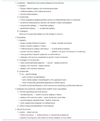Epilepsy: Epidemiology and Classification
Article information
Abstract
Epilepsy is defined as the condition having the propensity of recurrent seizures and its clinical diagnosis is based on the two or more spontaneous seizures occurring more than 24 hrs apart or one episode of spontaneous seizure associated with an well defined brain pathology. There are two classification systems; one for the epileptic seizures and the other for the epilepsies and epileptic syndromes. The former is simple and clinically useful for the choice of antiepileptic drugs, however, it does not provide any further information regarding the etiology, prognosis, or other clinical characteristics of given patients. For that reason, the latter classification system is being more widely applied at the epilepsy community. However, the syndromic classification of epilepsies, which is based on the clustering of symptoms and signs occurring together, is still at its evolving stage and it should be regarded as the classification system developing into the etiological or pathogenesis-based classification. The incidence of epilepsy is quite variable in different regions, but usually around 40 to 70 cases per 100,000 annually in developed nations with bimodal peaks at the young children and the elderly over age 65. The recent trend of incidence was remarkable for a gradual reduction in young children, contrasted by a rapid rise in elderly population, which might be related to the rapid increase in the proportion of elderly in modern societies. The age-adjusted prevalence of epilepsies is around 0.5 to 1.0% with similar distribution patterns to the incidence. It has been estimated that about 4% of population is expected to develop epilepsy throughout the life time until the age of 80. The natural course of epilepsy is characterized by a spontaneous cure or prolonged remission in about 70% of patients over a prolonged follow-up period (50% without antiepileptic drug treatment and 20% with treatment). These findings clearly indicate that epilepsy is a treatable condition.


